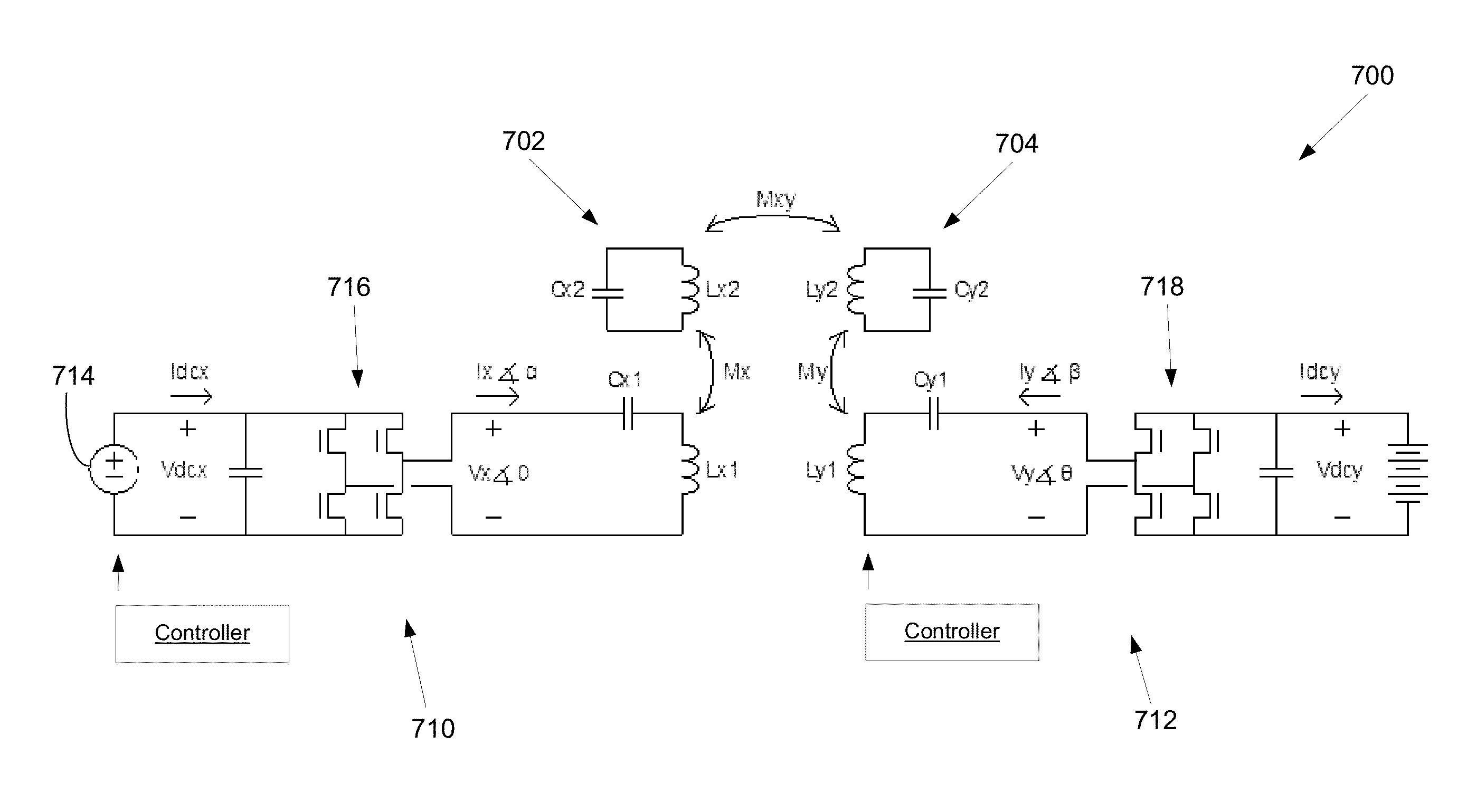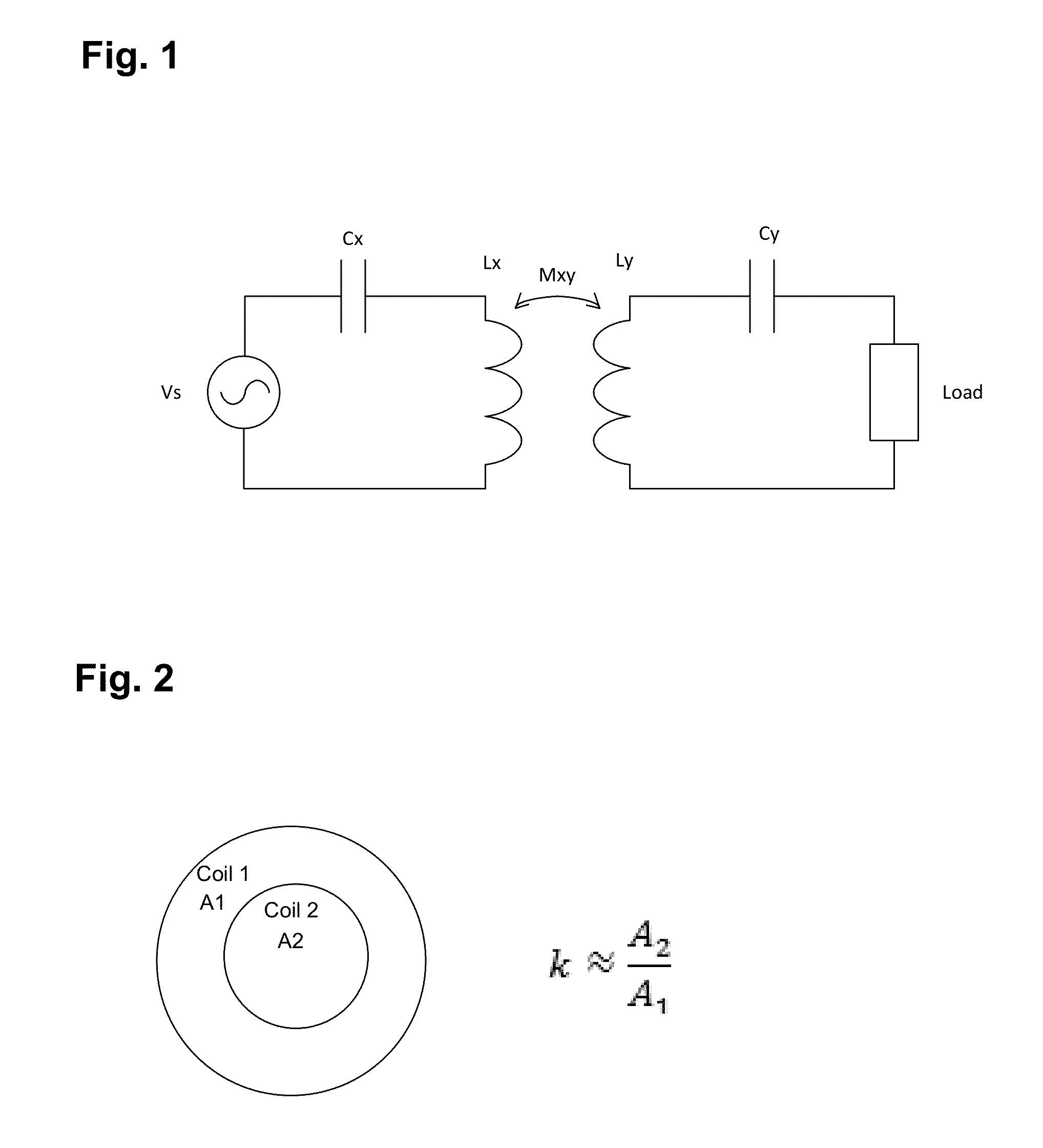Self-tuning resonant power transfer systems
a resonant power transfer and self-tuning technology, applied in the direction of transformer/inductance circuits, circuit arrangements, inductances, etc., can solve the problems of limited size and power requirements of implanted devices, limited position within the body that can accommodate larger implants,
- Summary
- Abstract
- Description
- Claims
- Application Information
AI Technical Summary
Benefits of technology
Problems solved by technology
Method used
Image
Examples
first embodiment
[0084]In a first embodiment, shown in FIG. 4, a TET system 100 comprises two resonant systems, a transmitter resonator 102 and a receiver resonator 104. Each of the resonant systems can be connected to a voltage divider circuit. Transmitter resonator 102 includes an inductor Lx and a capacitor Cx2 configured as a tank circuit. Receiver resonator 104 includes an inductor Ly and a capacitor Cy2 configured as a tank circuit. In order to excite each resonant system an impedance matching circuit can connect the transmitter resonator to the power source and the receiver resonator to the load. This way the load and power source only have to supply the real part of the power, and the reactive part of the power is handled by the impedance matching circuit.
[0085]In FIG. 4, the impedance matching circuits can comprise voltage dividers formed from capacitors. Voltage divider 106 can be coupled to transmitter resonator 102 and can comprise capacitor Cx1 and inductor Ls, coupled to voltage source...
second embodiment
[0087]In TET system 200, shown in FIG. 5, transmitter resonator 202 includes an inductor Lx2 and a capacitor Cx2 configured as a tank circuit. Receiver resonator 204 includes an inductor Ly2 and a capacitor Cy2 configured as a tank circuit. The impedance matching circuits can comprise transformer circuits. Transformer circuit 210 can be inductively coupled to transmitter resonator 202 and can include capacitor Cx1 and inductor Lx1 coupled to voltage source Vs. Transformer circuit 212 can be inductively coupled to receiver resonator 204 and can comprise capacitor Cy1 and inductor Ly2, coupled to the Load.
[0088]In FIG. 5, the two coils on the transmitter can act like a transformer so that the voltage on Lx1 is much smaller than the voltage on Lx2. Lx2 and Cx2 make up the transmitter resonator, and Lx1 and Cx1 act as an exciter to keep the resonance going.
[0089]Both variations described in FIGS. 4 and 5 can be designed to work equally well. There will be trade-offs relating to the deta...
PUM
| Property | Measurement | Unit |
|---|---|---|
| power | aaaaa | aaaaa |
| impedance | aaaaa | aaaaa |
| resonant frequencies | aaaaa | aaaaa |
Abstract
Description
Claims
Application Information
 Login to View More
Login to View More - R&D
- Intellectual Property
- Life Sciences
- Materials
- Tech Scout
- Unparalleled Data Quality
- Higher Quality Content
- 60% Fewer Hallucinations
Browse by: Latest US Patents, China's latest patents, Technical Efficacy Thesaurus, Application Domain, Technology Topic, Popular Technical Reports.
© 2025 PatSnap. All rights reserved.Legal|Privacy policy|Modern Slavery Act Transparency Statement|Sitemap|About US| Contact US: help@patsnap.com



